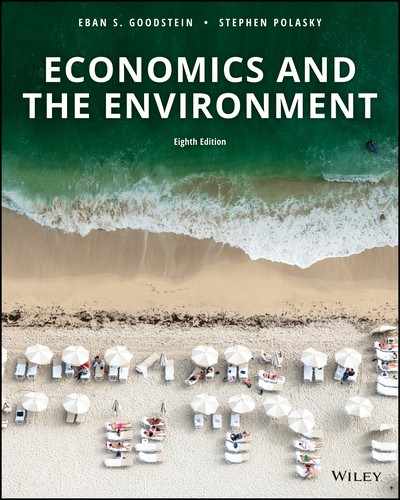PART IV
How Can We Solve Global Challenges?
To this point, this book has focused primarily on environmental quality within a single wealthy country, the United States. We have explored the normative debate on the “right” level of pollution; considered political-economic realities that can constrain the effectiveness of government action to achieve these goals; and in the previous four chapters, analyzed two broad approaches to “doing better”—incentive-based regulation and clean technology promotion. In this final part of the book, we extend the lessons learned to resolving the issues of global environmental concern: global warming, ozone depletion, loss of species diversity, and management of the global commons—the ocean and Antarctica.
As one steps outside the national border of a developed country, two things are immediately apparent. First, we are an awesomely wealthy people. A personal example brought this home to me. When I was in Africa, my driver was admiring my work boots and wanted to know what they cost. I admitted that the salary he earned in 3 months, and on which he supported his entire family, would barely be enough to buy them.
The second fact: As significant as our environmental problems are, they pale in comparison to those faced by people in poor countries. Hardship and suffering from water and air pollution, soil erosion and degradation, and deforestation and flooding are serious, dramatic, and widespread in the less-developed world.
This part of the book explores the complex links between widespread poverty in low income countries (working in part through high population growth rates), high levels of consumption in rich countries, and environmental degradation both at the global level and in the less-developed world. We also consider a variety of policies that governments in both rich and poor countries can undertake to reverse this environmental decline. Finally, we end with a look at the economics of global environmental agreements.
The stakes are high. By 2100, our grandchildren may be living on a planet supporting a stable population of 9 billion people, in an environmentally sustainable manner. On the other hand, our grandchildren may be sharing the globe with a population of 12 billion people (and rising), in a world where environmental life-support systems will surely be stressed beyond recovery. The ultimate outcome depends in large measure on the actions of those of us who have sometimes bought boots at $200 a pair.
